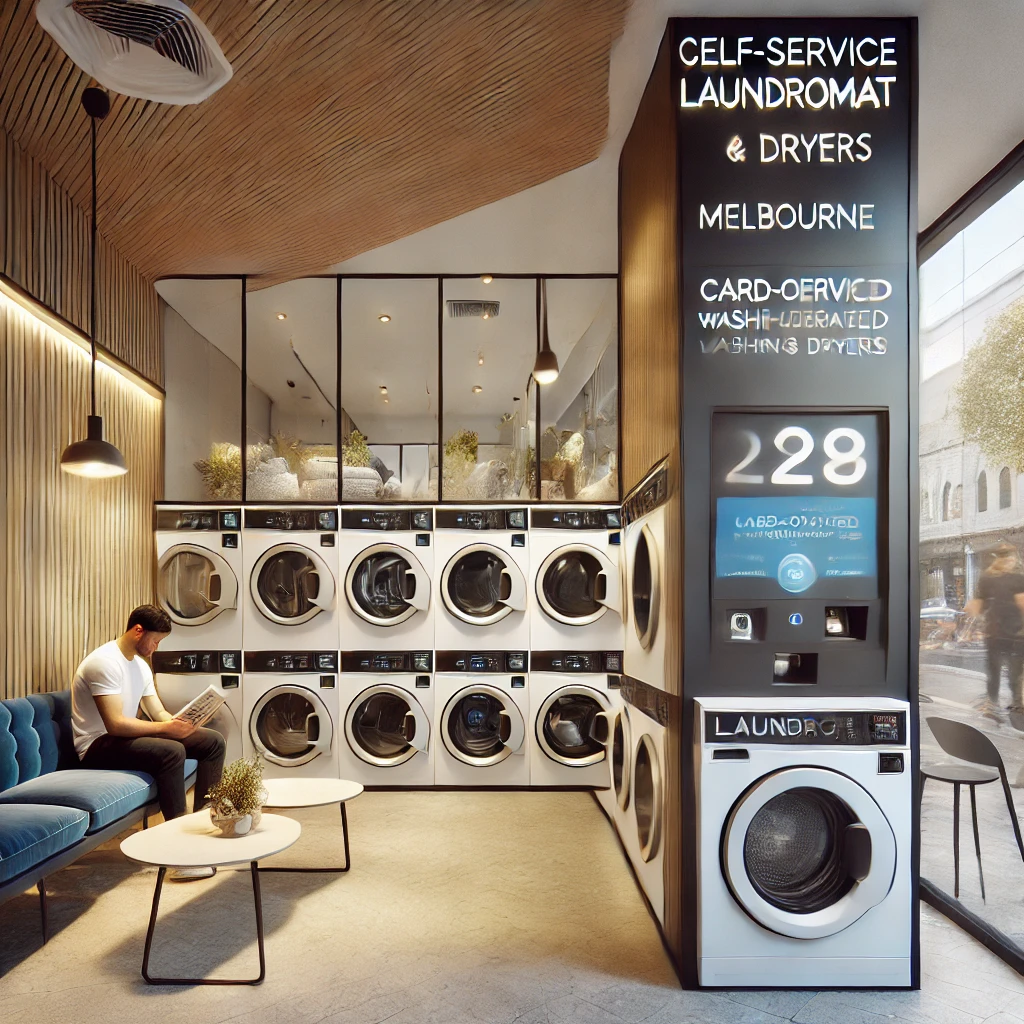Addressing the real issues through smarter Laundry Room Management
Running a laundry business sounds simple: wash, dry, fold, repeat. But anyone who’s ever operated a laundry facility—whether it’s an in-house operation at a hotel or a shared laundry room in a residential block—knows it’s rarely that smooth. Machines break. Staff call in sick. Orders pile up. And margins? They’re thinner than a freshly pressed napkin.
Many of these recurring headaches stem from one thing: poor Laundry Room Management. Whether the service is run internally or contracted out, how well the laundry function is managed can make or break the operation.
So what are the biggest challenges in the laundry business—and how can better management solve them?
1. Equipment Downtime Is a Silent Profit Killer
Every minute a machine sits idle or broken is money lost. Unfortunately, breakdowns are common in high-volume operations. Commercial washers and dryers run hot, fast and hard. Over time, without regular servicing and monitoring, failures become inevitable.
Good Laundry Room Management tackles this upfront. Managers keep preventive maintenance schedules, monitor machine load patterns, and react quickly to small issues before they become major repairs. They also make sure machines aren’t overloaded—preserving both equipment lifespan and linen quality.
Learn how operational support and route planning improve uptime through strategic Laundry Room Management.
2. Inefficient Workflows Slow Everything Down
In laundry, time is the enemy. A poor system leads to backlogs, missed pickups, or late deliveries. This is especially true in environments like gyms or hotels, where high turnover leaves little margin for delay.
Common workflow mistakes include:
- Mixing different clients’ laundry (leading to confusion or loss)
- Using manual logs instead of digital systems
- Assigning staff inefficiently across shifts
To avoid this, forward-thinking operators implement structured systems. These may include RFID tracking, route scheduling software, and consistent sorting standards. Having a dedicated laundry manager in charge ensures nothing slips through the cracks.
To see how digital scheduling and tracking systems streamline results, read more on Laundry Room Management.
3. Labour Shortages Hurt Quality and Reliability
The laundry industry has long battled high staff turnover. The work is repetitive, physically demanding, and often low-paid. As a result, operators may find themselves constantly hiring and retraining.
This leads to two major problems:
- Inconsistent quality (stains missed, wrong folding, mix-ups)
- Unreliable turnaround times (staff shortages delay output)
Well-managed facilities approach this through proper shift planning, incentives, and skills training. Some operators are shifting away from in-house laundry altogether, opting to outsource operations to external teams with consistent staffing and service guarantees.
You can find practical strategies for outsourcing and route coordination in this breakdown of Laundry Room Management.
4. Utility Costs Are Getting Out of Control
Electricity, water and gas bills are rising across Australia. In a laundry room, these are not minor expenses—they’re major contributors to overhead. Old machines guzzle resources, and inefficient cycles compound the problem.
Smart laundry managers monitor energy usage, implement high-efficiency cycles, and often move to off-peak usage models. Some facilities have even begun installing greywater recycling systems or solar-powered dryers to control costs.
According to the Energy.gov.au business efficiency guide, simple steps like heat recovery systems and machine upgrades can slash energy usage by up to 25%.
5. Space Constraints and Poor Layout Design
You can’t fix what you can’t move around. Many laundry rooms—especially in older buildings—are shoehorned into small, poorly ventilated corners. Machines are stacked badly, air doesn’t circulate, and sorting areas are cramped.
Poor layouts cost time and create frustration. Staff have to double-handle loads, or work around each other. Spills happen more often. And the risk of cross-contamination rises.
This isn’t just a comfort issue—it’s a hygiene one. Professional managers often audit the space and rearrange workflows to cut unnecessary movements and improve air and workflow circulation.
6. Compliance and Hygiene Gaps
In settings like aged care homes or clinics, there are strict hygiene regulations for linen handling. Not separating soiled and clean items, or failing to meet water temperature standards, can result in health risks—or worse, penalties.
Yet many small operations still run informally. They lack documented protocols or ignore national guidelines. Without a dedicated laundry manager enforcing compliance, these issues go unchecked.
In well-run setups, managers track compliance logs, implement hospital-grade detergents, and train staff in proper PPE use and handling methods.
7. Client Expectations Are Climbing
Customers now expect speed, clarity, and quality. Whether they’re residential tenants using a laundry room or businesses relying on a commercial wash-and-return service, delays or inconsistencies are no longer acceptable.
Laundry operations that haven’t adapted to real-time communication, flexible scheduling, or feedback systems risk losing business. Managed laundry systems with app-based booking, SMS alerts, and customer service integrations are now becoming standard.
Meeting modern expectations starts with strong operational oversight—and that begins with having the right management system in place.
Final Take: Laundry Isn’t a Side Job Anymore
Laundry operations are complex, with many moving parts. Trying to manage them without structure, support, or insight leads to burnout, breakdowns, and unhappy clients.
The good news? Most of these problems have clear solutions—and they all begin with better Laundry Room Management. Whether you’re handling laundry in-house or outsourcing the function, putting the right systems in place reduces costs, increases reliability, and improves client satisfaction.
With dedicated management, digital scheduling, and strategic route support, even high-volume laundry rooms can become consistent, cost-efficient operations.
Laundry shouldn’t be your daily problem. With smart planning, it becomes your hidden strength.

